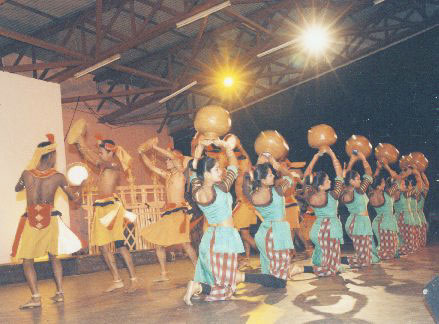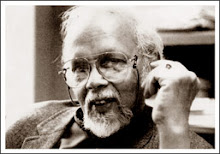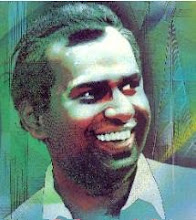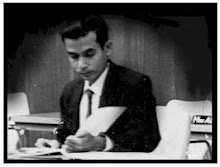Source: Light Millennium

Dances of Sri Lanka
By Hemasiri PREMAWARDENE
There are three classical dance forms and several folk dances in Sri Lanka the classical dance forms are known as Kandyan dancing Ruhunu dancing and Saparagmu dancing; Kandyan dancing is practiced in the central hills of the island, Ruhunu in the coastal or low country areas, and Saparagamu in the province known as Saparagamuwa, particularly in the district of Ratnapura, world-famous for its gems.
The three classical dance forms differ in their styles of body-movements and gestures, in the costumes worn by the performers, and in the shape and size of the drums use to provide rhythmic sound patterns to accompany the dancing
The drum used in Kandyan dancing is known as the GETA BERE, the drum in Ruhunu dancing as the YAK BERE, and drum in Saparagamu dancing as the DAVULA (the word BERE or BERAYA in Inhale means “Drum”) The Geta Bere is beaten with the hands as is also Yaka Bere, while the Davula is played with a stick on one side and with one hand on the other side; the Geta Bere has a body which tapers on both sides while the Yak Bere and the Davula both have cylindrical bodies.
The main distinguishing feature between Kandyan and Saparagamu dancing, and Ruhunu dancing, is that Ruhunu dancers wear masks.
The classical dance forms are associated with the performance of various rituals and ceremonies which are centuries old and are based on the folk religion and folk beliefs going back to times before the advent and acceptance of Buddhism by the Sinhalese people in the third century B.C. These rituals and ceremonies reflect the values, beliefs and customs of an agricultural civilization.
The pre-Buddhistic folk religion consisted of the belief in a variety of deities and demons who were supposed to be capable of awarding benefits and blessings but also causing afflictions and diseases. Accordingly they had to be either propitiated or exorcised with offerings and the performance of rituals and ceremonies.
The repertoire of Dances in Kandyan dancing has its origins in the ritual known as the Kohomba Kankariya, which is performed to propitiate the deity known as Kohomba for the purpose of obtaining relief from personal afflictions or from communal calamities such as pestilence. Although this ritual is rarely performed at the present the various dances associated with its performance could be seen in the Kandy Perahere, and annual religion-cultural event which takes place in the city of Kandy in honor of the sacred tooth-relic of the Buddha housed in the Delude Malaga, the Temple of the Sacred Tooth.
The repertoire of Ruhunu dancing has its origins in the rituals of Devol Maduwa to propitiate a deity of the same name, and in the exorcistic rituals known as Rata Yakuma and Sanni Yakuma. Rata Yakuma and Sanni Yakuma are associated with various demons who are supposed to cause a variety of afflictions and incurable illnesses.
Saparagamu dancing is associated with the ritual known as the Gam Maduwa, which is performed to propitiate a deity called Pattini, a female. The purpose is to obtain a good harvest or to ward off evil or to be rid of and infectious disease.
Apart from the classical dance forms there are also folk dances, which are associated with folk activities and festivities. Leekeli (stick dance), Kalageldi (pot dance) and Raban (a hand drum) folk dances prevalent at the present time.
There is also in the low country a dance-drama called Kolam in which the performers wear masks depicting animals or people such as kings or high officials, and provides amusement and social satire. It has been suggested by scholars that Kolam may have developed from the ritual known as Sanni Yakuma and had later become a dance-drama independent of ritual elements.
-. -

Masks of Sri Lanka
by Gamini WIJESURIYA
Sri Lanka, and Island close to the Southern tip of India is noted for its Masks. It is not possible to say how far back this mask tradition goes in the country, but it is possible that it is a few centuries old. Masks have been used in the many rituals performed to propitiate the gods or demons or to cure some illnesses said to be caused by demons. Among these rituals, the Sanni Yakuma is quite important and all demons called into this ritual in order to be re-quested to heal the patients arrive wearing masks. In this there are eighteen masks, each one representing one or more ailments. Today one could count even up to twenty-two such masks coming in the ritual witch would prove that many new sicknesses that came to be known later were also represented by new masks. These masks have so many similarities that the best way to identify them is by listening to the description of the Sanni given by the performers. Certain masks have not changed their form although someone who is not quiet conversant with them may give them different names. Earlier in these rituals, it could be that there was one slightly big mask having on it a few more masks associated with certain ailments. In the Munich Museum, Germany is a mask of this type. This could be the forerunner to the big MAHAKOLA SANNI mask we know today which carriers in addition to the mask for the performer, eighteen other masks and a figure of a demon. The mask in Munich has only nine masks. The Mahakola Sanni mask is too big and it was certainly a very difficult task for a performer to dance with it. It may be that this mask was later used just to decorate the place at the entrance to the area where the ritual was performed. There is evidence for this if one were to examine the Mahakola Sanni mask in the Naparastek Museum in Prague. On the abdomen of the demon, there is the British coat of arms. People considered the showing of the British the coat of arms even at places of worship, quite acceptable and in order at the time, may be because the country was ruled by Britain.
The more important and very widely used masks are from KOLAM which is folk theatre. Kolam should be pretty old, but it is still not possible to say when it really started. There are many Kolam texts available and one of the earliest copies are available in the British Library. This is copied on paper. Kolam has a very clear script and characters are introduced in one particular order. This may however vary in a modern day performance. Every character in Kolam is given a mask and everyone is introduced by the leader before he enters the arena. In a Kolam performance, all performers were males. At the beginning the place is cleaned and the King and Queen arrive to witness the performance. They have very large and beautiful masks to wear and these are also quite heavy. The King and Queen have to sit through the performance, so it is not so difficult for them. However, the King is given a sward into his hand, which he usual uses to keep his big mask in position. The performance really begins after the arrival of the King and the Queen. There are the soldiers, animals, Rakshas (superior to the normal Demons) who are introduced and later there are many stories that are enacted. Kolam scripts also vary and from time to time and it appears that more new masks have been introduced. One such mask is that of a Devol Dancer, now in the collection in Leipzig, Germany. It is not possible to find any reference to this mask in any Kolam script.

The masks of the demons of Rakshas are quite interesting. An important feature is that they all have cobras on them. There is the mask of Garuda, the eternal enemy of the Cobra and one could see a cobra inside his beak. The Gara Raksha has three cobras over his head while the number of cobras on the Naga (Naga means Cobra) could be from six to twenty or even more. As the performance begins in the presence of the King and Queen, it was natural that his courtiers and minor officials also had to be there. An examination of the Kolam script would show that some of these officials are treated with a bit of sarcasm. There are the Mudliar (a high official responsible for the administration of a province) the Arachchi, village Headman his assistant and Policeman, Kolam is a very humorous play and there are many episodes played on to provoke laughter among the audience. Among such are the struggle of the old Nonchi who is trying to take home her husband Ana Bera who has had a little too much to drink and the soft corner the Mudaliar and his assistant had towards the beautiful Lencina, the wife of the washerman, JASAYA. Into this episode of Jasaya and Lencina, another woman Prancina is introduced, to prove to Jasaya
There is another folk theatre known as Sokari in which also a mask is used, but this is not taken very seriously as this particular one is usually turned out of arecanut leaf or some paper. The masks do not last long like the masks from the rituals or the Kolam, which are made out well-seasoned wood, treated and painted.
It is becoming increasingly difficult to find Kolam or Sokari performances in Sri Lanka today and this is mostly due to changing values and also beliefs. Earlier it was more a community affair where villagers all got together to organize a performance contributing towards it, some with labor and some with money. Performances were usually held after harvesting and one performance could have lasted two to three nights. Today a performance lasts only a few hours and even the people who come to witness there do not have the time to sit through them for nights. Attempts have been made to use the stage for these performances like the Sanni, but the real atmosphere of a ritual seem to fade away from such performances. Masks from the Kolam, however could be used more effectively on stage as most of these masks were even originally used for entertainment.
* * * * *

Drums of Sri Lanka
Piyasara SHILPADHIPATHI
Sri Lanka has been having many types of drums in use from ancient times, and reference to these are found in some of the classical literature e.g. Pujawaliya, Thupawansaya, Dalada Siritha etc. Although there had been about 33 types of drums, today we find only about ten and the rest are confined only to names.
Drums in use today are:
1. Geta Bera (Bera Drum)
2. Yak Bera
3. Davula
4. Thammattama
5. Udakkiya
6. Dakkiya
7. Bummadiya
8. Hand Rabana
9. Bench Rabana
10. Dandu Beraya,
and Sri Lankan Drum Tradition is believed to go as far back as 2500 years.
An examination of the village society in olden times would reveal that drums were used on special occasions during the life span of people, from their birth to the death. Drums, which were originally used, for pleasure and later for rituals, came to be used in the Buddhist Temples for the many ceremonies. At a later stage, Drums were also used as a means of communication. The Davula, Thammattama and the Bench Rabana have an important place in matters of communication. Some of these functions are:
1. Ana Bera - to inform the people about orders from the King.
2. Vada Bera - drums played when a criminal is taken for beheading,
3. Mala Bera - drums used in a funeral procession and
4. Rana Bera - drums used by the army when going out to meet the enemy.
Geta Bera: This is the main drum used to accompany dances in the Kandyan or the Hill Country tradition. This drum is turned out of wood from Ehela, Kohomba or Kos tree. The drum tapers towards the ends and on the right side, the opening is covered with the skin of a monkey while the opening on the other side is covered with a cattle skin. The strings that are used tighten the sides are from a deerskin. A student who begins his training in the use of the Greta Bera has to practice twelve elementary exercises.
Yak Bera: This drum is referred to by many names among which are the Ruhunu Bera, Devol Bera and Ghoskaya. This drum normally accompanies the dances from the low country, especially the mask dancing connected with rituals and the folk play Kolam. The drum is turned out of wood taken from the Kohomba, Ehela, Kitul or Milla trees. This is a cylindrical drum, fairly long and is played on both sides with hands. The openings on the two sides of the drum are covered with the stomach lining of a cow. The strings used to tighten the sides are from cattle skin. A student has twelve elementary exercises to learn to play this drum.
Davula: This drum is used in most of the Buddhist ceremonies all over the island. This drum is cylindrical, but much shorter than the Yak Bera. An important feature of this drum is that one side is played with the hand while the other side is played with a stick. The sides are covered with cattle skin and the tightening is done with a string made specially for the purpose. These are also twelve elementary exercises to be followed by a person learning to use the drum.
Thammattama: This is also referred to as the Twin Drum. This drum is played with two sticks. The tow drums are of different sizes and while the right one produces a louder sound, the left one produces a looser sound. The drums which have only the top side covered either with the skin of the cow or a buffalo. The wood used is from Kos, Kohomba and Milla trees. They used special sticks to play drums and the wood is from a creeper known as Kirindi.
Udekkiya: The smallest drum among the local drums is the Udekkiya. This is played with one hand the sound is controlled by pressure applied on the strings. The drum is lie the hour glass and is made out of wood from Ehela, Milla and Suriya. The drum is painted with lacquer. The openings are covered with skin from the iguana, monkey or goat.
Dakkiya: This is similar to the Udekkiya, but bigger. This is used mainly for rituals. The drum is hung on the shoulder of the player and the sound is controlled by applying pressure on the strings.
Bummadiya: This is the only drum turn out of clay. The single opening is covered with the skin of goat, monkey or iguana. The drum is hung on the shoulder of the player and it is played with both hands. During harvesting, people could be seen playing this drum accompanied by singing. The drum is in the shape of a pot.
Hand Rabana: Rabana is about one foot in diameter and is turn out of wood from Kos and Milla. The skin used is that of a goat. Some performers keep revolving the rabana on the tip of their fingers while others play it accompanied with singing. This is played with one hand only.
Bench Rabana: This is the biggest of the drums used in Sri Lanka. The special feature of this drum is that it is played at a time by two or more people. They use both hands. This drum is commonly used for New Year festivals and there are many special rhythms played on them. It is mostly played by women.




































Hello! I just wanted to mention that Ethnomusicologist Michael Balonek of the US has just published a book on playing technique for the Thammattama (drum, one of those listed above)! It can be found at Amazon.com, Borders.com, BarnesAndNoble.com, iBooks, and from the publisher at http://borders.bookbrewer.com/content/sri-lankan-drumming-thammattama-0
ReplyDelete